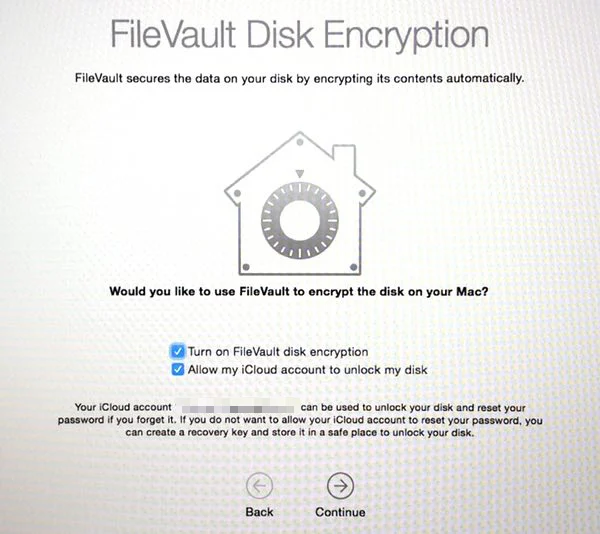

- #ACCESS MAC RECOVERY KEY ENCRYPTION HOW TO#
- #ACCESS MAC RECOVERY KEY ENCRYPTION PDF#
- #ACCESS MAC RECOVERY KEY ENCRYPTION PRO#
- #ACCESS MAC RECOVERY KEY ENCRYPTION PASSWORD#

If the recovery key is not documented, recorded improperly, or misplaced, the key will be of little value in recovering the data this is why it is strongly advised that users safeguard the recovery key at all times. But the key holds a deeper value: If the account or passphrase (see method #1 above) fails to unlock the disk, the recovery key may be invoked to unlock the disk, providing access to macOS and the decrypted data. It is a system-generated, 24-character alpha-numeric key that is displayed on-screen to the user one time and only during this phase in the process, which is why the user is urged to write down this key for safekeeping. The recovery key is created during FileVault 2’s initialization process.
#ACCESS MAC RECOVERY KEY ENCRYPTION PRO#
SEE: Encryption policy (Tech Pro Research) 2: Recovery key method

This allows either the user account that initially set up FileVault 2, or another whitelisted admin-level account, or even a special service account or IT personnel to regain access to the contents of that disk, and decrypt the data with their account, if necessary.
#ACCESS MAC RECOVERY KEY ENCRYPTION PASSWORD#
Basically, any user with administrative privileges to that computer can essentially “unlock” the disk–regardless of the ACL permissions configured within the filesystem–as long as each account has been configured by clicking the Enable User button and entering the password that corresponds to that account.
#ACCESS MAC RECOVERY KEY ENCRYPTION HOW TO#
Must-read security coverageĨ enterprise password managers and the companies that will love themĬyber threat intelligence software: How to choose the right CTI tools for your businessĮnd user data backup policy (TechRepublic Premium)įileVault 2 does not look for a specific password to perform the encryption process, just the key. This may seem like a horrible idea at first, because what happens if the user is no longer with the organization or does not remember her password? Apple has accounted for this by not explicitly relying on the user’s password, but rather using the password to create the key that will encrypt the disk. During this initialization process, FileVault 2 will use this user’s password as the passphrase with which to create the key that will be used to encrypt the disk. 1: User account or passphrase methodįileVault 2 encrypts data on the disk entirely (the legacy FileVault encrypted only the user’s home folder)–this means that typically a user with administrative privileges on the device is capable of enabling FileVault 2 initially.
#ACCESS MAC RECOVERY KEY ENCRYPTION PDF#
Note: This article is included in the free PDF download Apple FileVault 2: Tips for IT pros. Learn three ways that FileVault 2-encrypted volumes may be decrypted to gain access to the protected data on the disk. When IT needs to access or recover the data, questions arise, including: How can we access or recover the data? Did IT or the user set up the encryption scheme? And more importantly, what options are available to mitigate this issue and gain access to the protected data? Businesses that enabled Apple’s FileVault 2 on their Mac computers have whole-disk encryption on those devices, and the data is secured with strong encryption standards while at rest. The good news is some organizations have implemented encryption for their users’ computers. And yet, it still amazes me how many recent attacks could have had their impacts lessened if the data being targeted had been encrypted in the first place. Data encryption is generally viewed as an important, stop-gap measure that prevents reading the contents of data, especially data that has been accessed without authorization, exfiltrated by internal threat actors, or simply fallen into the wrong hands.


 0 kommentar(er)
0 kommentar(er)
